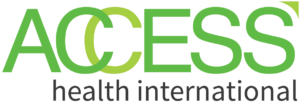
| The income classification “M40” refers to Malaysians who make RM 4850 to RM 10 959 (USD 1170-2635) per month and are the group that benefits least from government health financing programs. While those in the B40 group (i.e., those earning at the bottom 40% of household incomes) receive government support such as PEKA B40 which funds surgeries and medical equipment or MySalam which provides limited healthcare insurance coverage, Malaysians in the M40 group are excluded. In states such as Selangor and Terengganu, M40 households are also excluded from subsidized healthcare programs such as Peduli Sihat, causing them to rely heavily on their own income to pay for their health care.
With 81% of Malaysians using their own income to pay for the rising healthcare cost in Malaysia and with only 22% of Malaysians who purchase health insurance, healthcare costs will be a major burden for those in the M40 group. This is especially true given that 48% of M40 households received their outpatient healthcare services in private healthcare settings in 2019. This is compared to 30% among B40s and 62% among the T20s. A third of these M40 Malaysians were admitted to private hospitals compared to 15% among the B40s and two thirds of T20 Malaysians (those earning in the top 20% of household incomes). This means M40 Malaysians are seeking healthcare outside of public healthcare facilities, ultimately paying out-of-pocket for these services. One solution is to divide the M40 group into three categories – lower, middle, and upper – based on their household income thresholds. National healthcare programs should be expanded to reach this segment of the population. For example, MySalam insurance could be provided at a higher, but still affordable, premium than for the B40s. With incomes not much higher than the B40 income groups, wider coverage would allow this lower M40 segment more options in accessing affordable healthcare services. Fintech can also be used to provide additional safety nets for the M40 group. For example, insurance products customized to the needs of this group could be offered on Malaysian insurtech since 43% of Malaysians cannot afford to purchase health insurance, providing additional avenues for them to seek out affordable health insurance could solve this major barrier. Even in the United States of America, the rising premium and deductible are putting tremendous pressure on the middle-class Americans so this issue is not uniquely limited to Malaysia. Additionally, the government of Malaysia could provide expanded tax credits to help M40 Malaysians to cover their healthcare insurance premiums and deductibles. In addition to these expanded programs, awareness needs to be raised on the importance of owning healthcare insurance. The percentage of monthly household incomes spent on healthcare had risen to 5.1% in 2019 so it is crucial for more Malaysians, especially those who are seeking care in private hospitals, to own health insurance. With almost half of M40 Malaysians utilizing private hospitals, health insurance is increasingly important. Currently, topics on health insurance has been incorporated as part of the national curriculum. However, much more could be done to educate M40s on the importance of owning health insurance. In the last two years, COVID-19 pandemic was said to heighten the awareness towards the needs of having health insurance providing the much-needed fertile ground to plant the awareness towards the needs of owning health insurance in middle-income populations. However, health insurance is not the only solution and buying health insurance in Malaysia is still difficult. The current rules do not allow Malaysians to buy health insurance if they have a preexisting condition, excluding many Malaysians in the M40 group. Additionally, the age limit imposed by some health insurance companies means M40 Malaysians would only have health insurance as a safety net until certain age. In the United States of America, the Affordability Care Act has tried to reduce one of these limitations by removing the exclusion based on preexisting conditions. Similarly, the government of Malaysia should play an active role in expanding health insurance coverage for M40 Malaysians with preexisting conditions by its own regulatory interventions or financial subsidies. To assure they avoid debt from medical expenses, it is imperative that safety nets in the form of government subsidies and affordable private insurance plans should be made available for this group. National healthcare programs should expand to include middle-income Malaysians who also experience the heavy burden of out-of-pocket healthcare expenses. Author: Mohd. Nasir bin Mohd. Ismail, PhD, ACCESS Health International consultant in Malaysia |


